They will probably never go out of fashion! Types of stoves for heating the house
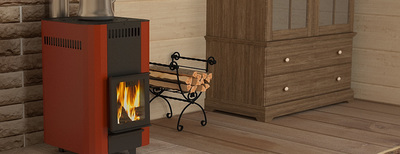
Stove heating has been around for a long time. But despite more modern technologies, remains relevant to this day.
Heating stoves can be made of brick, cast iron, steel. Many are additionally equipped with a water circuit.
Wood burning stoves for heating your home
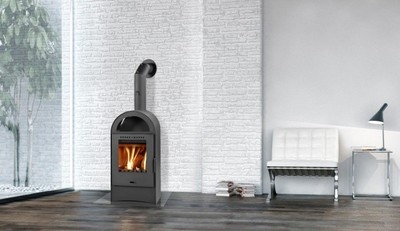
The main gas line is not installed everywhere. Heating with electricity is quite expensive and there are interruptions.
In such cases, stove heating comes to the rescue. Firewood is to a widely available fuel. They are easy to stock up on for a long period of time.
Advantages of stove heating
The advantages include:
- fuel availability;
- independence from communications;
- opportunity cooking (for heating and cooking);
- special atmosphere, created by living fire.
Reference. Sometimes used combined heating system. The stove is combined with another type, most often gas or electric.
Flaws
But there are also disadvantages:
- Massive brick ovens require a lot of time to warm up.
- Steel the oven is pretty cool down quickly, so you have to add more firewood frequently.
- Ourselves firewood (or other types of wood fuel) have to be purchased specially.
- Them need a place and suitable conditions for storage.
- Necessarily chimney device ovens.
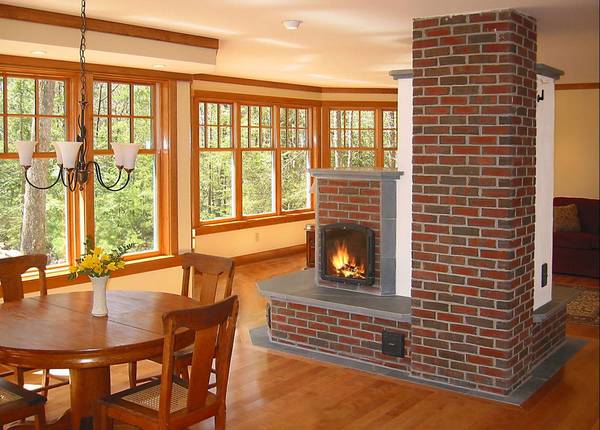
Photo 1. Heating stove made of brick with a chimney. The structure is quite massive, a foundation is required.
Correct placement of a wood stove
When choosing a suitable location for the stove, the following are important:
- heating efficiency Houses;
- How many useful area occupies the structure;
- convenience in service.
This takes into account, how many rooms will it heat oven. If only one, the stove is placed near a main wall or in a corner.
Reference. There are models of furnaces designed specifically for this purpose. for corner placement.
Leave it small distance to the walls. Then the entire surface of the furnace participates in heat exchange.
One stove is capable of heating two or three rooms at onceFor this purpose, it is built into internal partitions.
It is better to choose if possible the place for the stove is closer to the entrance. This makes it easier to bring in firewood, remove ashes, etc. If the stove heats several rooms, it is advisable to place the firebox in the kitchen or veranda. Then the living rooms will be cleaner.
It is important to take into account possibility of installing a chimney.
Types of stoves
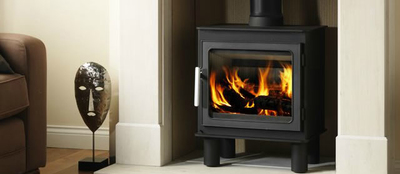
The models of stoves installed in houses are divided into heating and heating-cooking.
Both varieties are made in different sizes and capacities.
It depends on the power of the stove, what size room can it heat?
By material of manufacture ovens are divided into:
- brick;
- cast iron;
- steel.
Brick stoves are the heaviest and most inert. They take longer to light. But they retain heat longer.
Important! Brick ovens are being installed on a foundation not connected to the main oneThe thing is that the load from the whole house and from the stove is different.
Steel and cast iron The furnaces are smaller, cheaper, but less durable. They do not require an independent foundation.
Heating
Heating stoves operate on one of two principles. The first is more traditional - the fuel, burning, heats the walls, and from them the air is heated.
To get rid of some of the disadvantages of this method, heating equipment connect to water heatingThis is a more complex system that requires careful calculation.
Reference. As a rule, furnace models are selected or built for for one or another heating method.
Equipment with a water circuit on wood
When using it the house heats up more evenly. The heat will be not only near the firebox, but also anywhere in the room. This method is more effective.
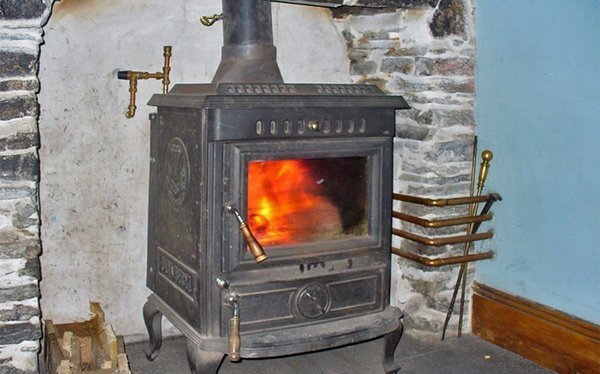
Photo 2. Cast iron wood stove with a water heating circuit. The system uses copper pipes.
The following work with the water circuit:
- long-burning equipment (for example, the Burelyan stove);
- fireplace stoves;
- traditional brick;
- solid fuel boilers.
Attention! You can't let the water in the pipes freeze, as they can burst. So if you're away for a long time, you'll have to drain water or add antifreeze.
Design
A heat exchanger or hot water boiler is built into the furnace firebox and is placed along the walls and arch. Therefore It is better to increase the size of the firebox.
The furnace heat exchanger is made from steel pipes or sheets. In the first case, the water will heat up faster. And the second option is much easier to maintain. The design provides two pipes. One of them is designed to connect the supply pipe, and the second - the return pipe.
Sometimes the heat exchanger pipes get cut in into the interior of brick walls.
Scheme
The heat exchanger is connected to the radiators by a system of pipes. In case of strong heating, the circuit also includes expansion tankExcess liquid is discharged into it.
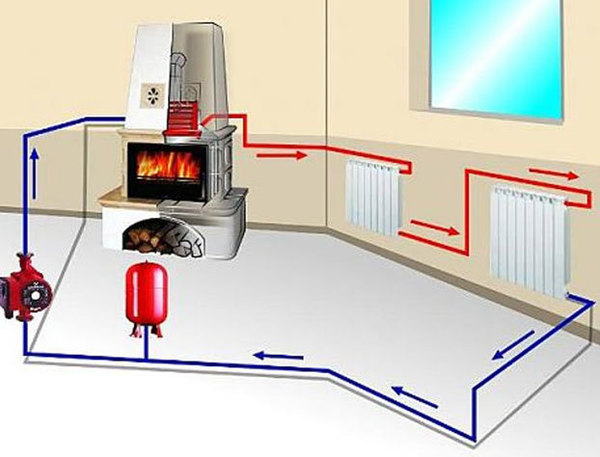
Photo 3. Diagram of a heating system with forced circulation. A pump is used to move the coolant around the circuit.
There are two types of wiring diagrams used:
- with natural circulation;
- with forced circulation.
In the first case, the water moves to the batteries and returns to the boiler under its own power. This method only suitable for small housesBut it is easier to implement and more economical.
In the second one, it is included in the scheme circulation pump. The coolant moves faster. Using a pump allows you to heat even large houses. But electricity is required to operate the pump.
Operating principle
When the wood burns, the walls of the stove and the water in the boiler heat up. The walls heat the room in which the stove is located. Water moves through the radiators and heats other roomsAs it cools down, it returns back to the heat exchanger.
Reference. Exists two ways wiring: one-pipe and two-pipe. In the first case, the water passes through all the radiators in turn and cools down noticeably by the last one. In the second case, each battery has two pipes, direct and return.
Heat dissipation
The heat from the combustion of fuel is transferred both through the walls of the furnace itself and by means of radiators. Therefore, the heat transfer is higher and more uniform. A One load of firewood lasts for a longer period of time.
Stone ovens
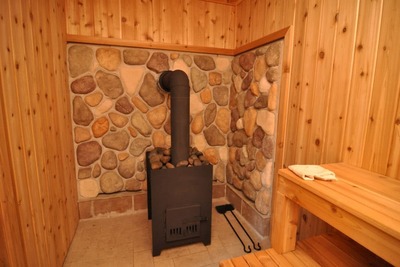
These are stoves of a special design, intended for baths. The body of the stove has a special compartment in which stones are placed. The walls are steel or cast iron, sometimes lined with stone or decorative tiles.
Sometimes the sauna stove also heats water. Water tank is connected to the stove using a pipe. The container itself can be located in another room.
Where to place
Such stoves are placed in a room that needs to be heated more strongly, that is, in the steam room. But it is not always convenient to heat it from there. If you need to add firewood, you have to open the door, and cold air rushes into the steam room. And when you clean up the ashes, the surrounding area gets dirty. Therefore, often firebox ovens they take you to the next room (rest room) or outside. For this purpose, the firebox is made longer.
In the steam room itself, the stove-heater is placed:
- near the wall;
- in the corner;
- on the wall.
Operating principle
The heat from the stove heats the stones. They absorb heat and then give it off, heating the air strongly. This creates a sauna effect. And for the atmosphere of a Russian bath water is poured onto hot stones (or herbal infusions). She evaporates, increasing humidity air.
Heating and cooking
Such ovens have two functions: heating premises and cooking. Useful in places where there is no gas and electricity supply is intermittent.
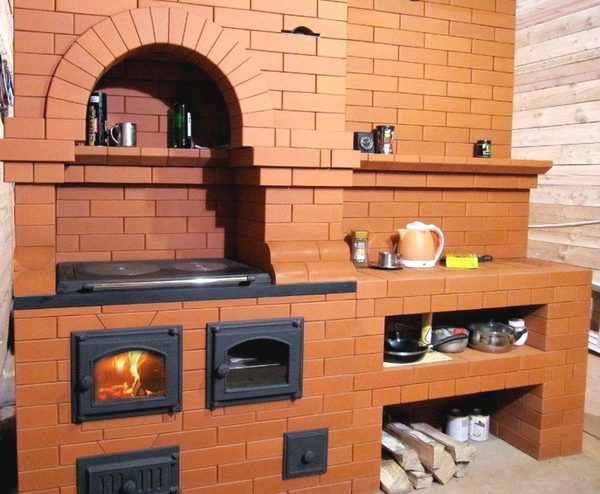
Photo 4. Heating and cooking stove made of brick. Equipped with two burners for cooking.
Such varieties include, for example, traditional Russian and Swedish stoves.
In the heating and cooking structures of the stoves there is a place for cooking. In brick ones this is usually additional camera, located above the firebox. In steel and cast iron, the top is one or two burnersThe heat rising from the firebox cooks the food.
Important! If such a device is included in a system with a water circuit, the hot water boiler is made in a different shape. It is located only on the side of the walls, and the heat rises freely from the arch. This design is less effective.
Traditional
Russian stove used for heating the home, cooking, and as a warm place to sleep. They were built in different sizes. But the general the operating principle is the same.
Attention! Traditional stove designed for a one-story building. The structure is quite heavy and therefore requires a solid foundation.
Operating principle
This quite a massive structure. When fired, the brick absorbs heat and then releases it throughout the day. Many Russian dishes were prepared in the heat emanating from the interior walls.
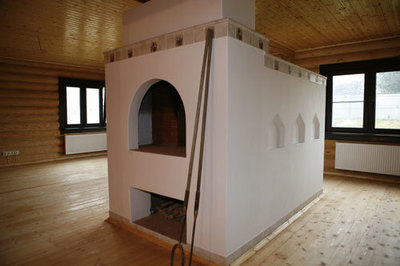
The sleeping platforms were also heated up. a bed located on top.
Wooden boards were often laid on it. Then it was impossible to get burned, no matter how hot the bricks were.
Due to the design features the heat from the firebox rises upward. Therefore, the area above the floor does not heat up. And under the ceiling the temperature is quite high.
Peculiarities
The internal structure is interesting. The main there is only one internal cameraThe vault is semicircular, and the far part is raised. It is where both the firebox and the food preparation take place.
Useful video
Watch a video that tells about the Finnish way of heating a country house with a stove.
Conclusion
Stove heating remains quite common, despite the emergence of other varieties. Firewood is an inexpensive fuel and is easy to prepare and store. on the site. And heating the house with a stove is quite effective.







Comments